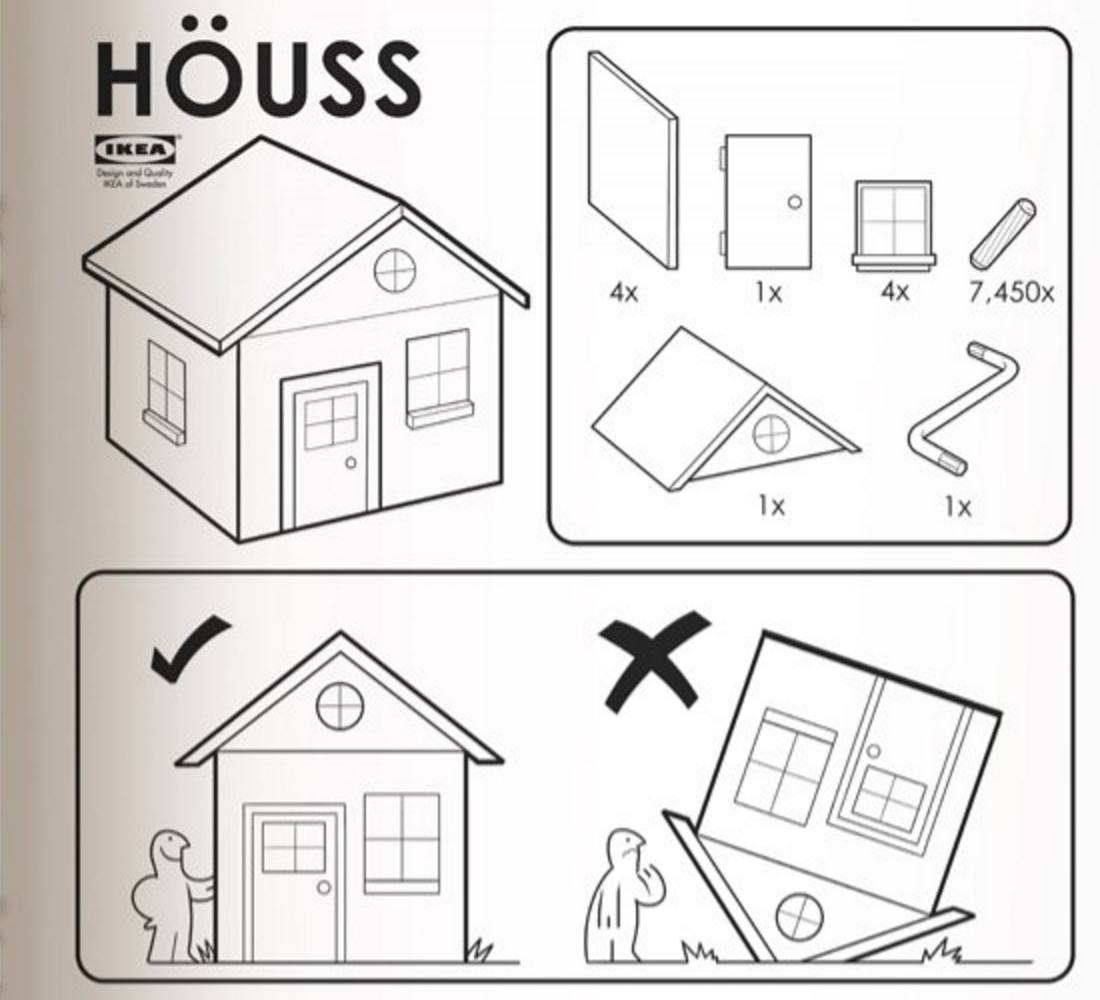Effort justification
Recently I’ve moved house. I wasn’t willing to fork out the money for the designer table that I wanted, so instead purchased a plain, cheaper IKEA one. As is the IKEA way, I spent my first afternoon in the new pad tirelessly assembling furniture, then proudly stood back to survey my work. Pretty chuffed with myself, I eagerly called my housemates into the room so we could collectively stand together and gaze upon my fine craft. What a relief that I didn’t buy that expensive table, this one is so much better! After all, I deciphered those IKEA diagrams I put it together myself. That evening, as I flicked through my latest read, The Art of Thinking Clearly, I discovered I had unconsciously become victim to effort justification.
“When you put a lot of effort into a task, you tend to overvalue the result.”
This is the crux of effort justification, a type of cognitive dissonance. A psychological theory which says when people’s behaviours and beliefs don’t align they experience discomfort. To relieve that discomfort, people often change their beliefs to match the behaviour. All of this happens unconsciously and is difficult to prevent. Why does it matter? Well, in the case of my exquisite new table, perhaps it doesn’t (but are IKEA in on this?). However, when it comes to treating patients, its worth considering.
Stanford, or University of Nowhere
Trying to decide which professional development course to undertake can be overwhelming. It’s not unusual to end up choosing the one that is the most expensive, or has arduous amounts of practical hours and finishes with an exam that is renowned for only passing the best of the best.
“Research proves that the harder the ‘entrance exam’ is to pass, the greater the subsequent pride and the value they attach to their membership”.
When we finally emerge from this demanding ordeal, we can comfortably believe that the juice was worth the squeeze, especially because it was so effortful. But was it? Is the new skill set superior to others? Do we end up with a bias towards using that specific technique/therapy because of the effort we put into learning it? Does it actually wield better results? Or have we have unconsciously inflated our sense of worth, and in turn the efficacy, for this particular treatment method?
Hurts so good
Could effort justification be at play in clinical settings? Might clinicians and patients both be fooled into thinking that deep tissue massage really has to hurt to be effective? What about cupping, acupuncture or any other ‘hands on’ technique?
Look at the results
So if effort justification is an unconscious response, how do we avoid it? Awareness is a good place to start. Next time you provide or receive treatment, stand back and examine the result – only the result. Look past the pain you incurred during a treatment, the hours and hours you spent at a course learning a new ‘technique’, the amount of money you forked out. Look at only the result.
Is it as good as you first thought?
– Hayley Leake
Last chance to get on an Australian Explain Pain or Graded Motor Imagery Course for 2016
Gold Coast 30 September – 2 October Explain Pain and Graded Motor Imagery (Close to full, remaining tickets selling fast)
Melbourne AU PPR*, Oct 7-8, Haslam *spinal cord injury focus
Perth AU Explain Pain + GMI, Oct 15-17, D.Butler & T.Cocks
Melbourne AU PPR, Nov 12-13, Brendon Haslam
Coffs Harbour AU EP, Nov 18-19, Martina Egan-Moog
EP3 events have sold out three years running in Australia, and we are super excited to be bringing this unique format to the United States in late 2016 with Lorimer Moseley, Mark Jensen, David Butler, and few NOI surprises.
EP3 EAST Philadelphia, December 2, 3, 4 2016
EP3 WEST Seattle, December 9, 10, 11 2016
To register your interest, contact NOI USA:
p (610) 664-4465
e noius@noigroup.com
Have you downloaded our new Protectometer App yet? Just search the App Store from your iPad for Protectomteter’





Hi Hayley,
Showing my age maybe, but back in the day we put so much time and work into our manual skills learning our spinal PPIVMs. Equally working out ten different axis of movement of the calcaniocboid joint of the foot. Hours went into perfecting our techniques and denial convinced us we could experience the movement!!! Or maybe shame that we couldn’t…..!!!
With the knowledge we have at our disposal today it has become , to quote Lorimer ” That complex yet that easy” to treat patients in today’s world.
DB London
On location. 😎😎👰🏻